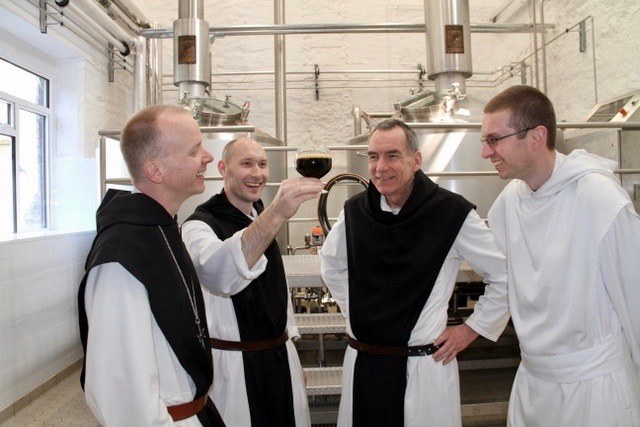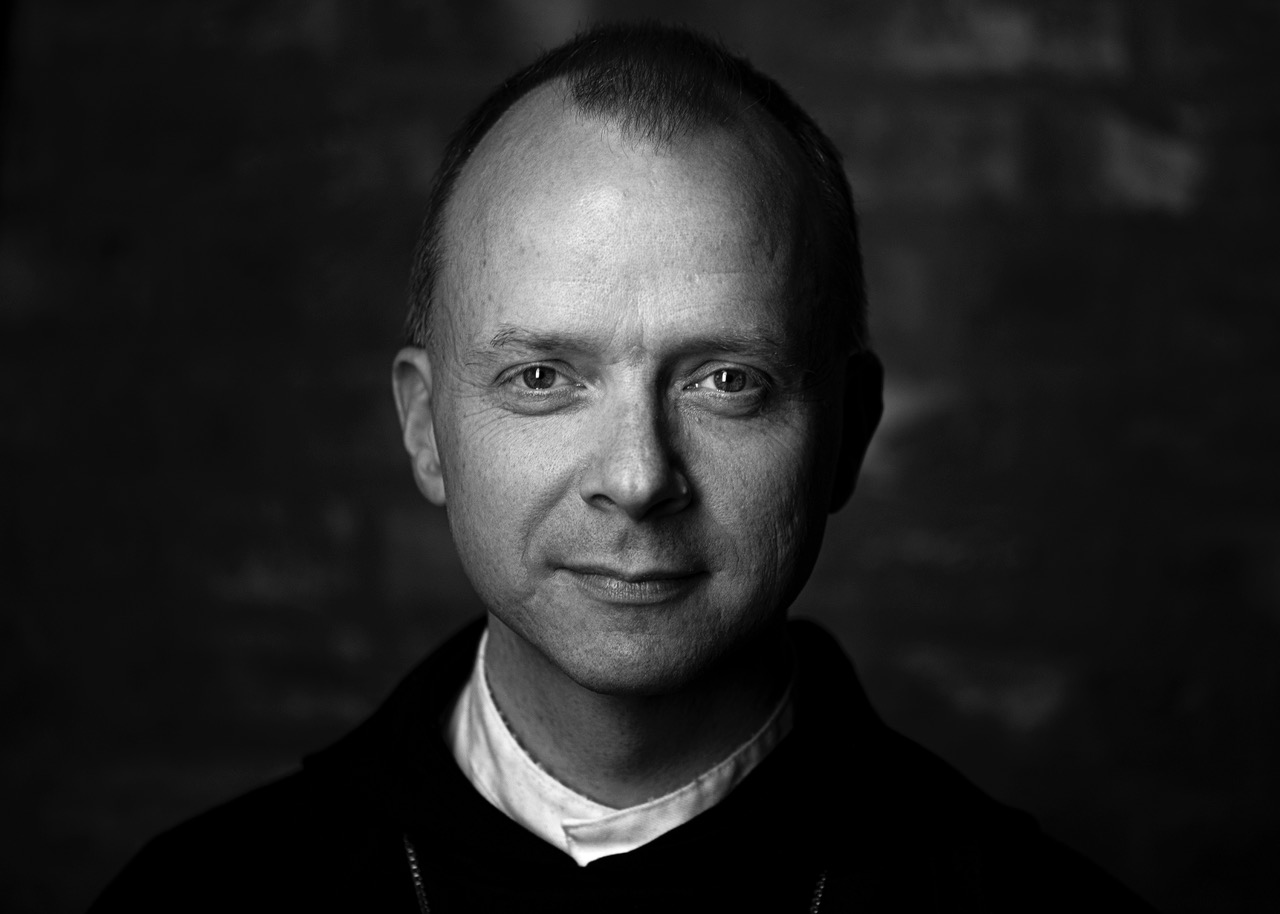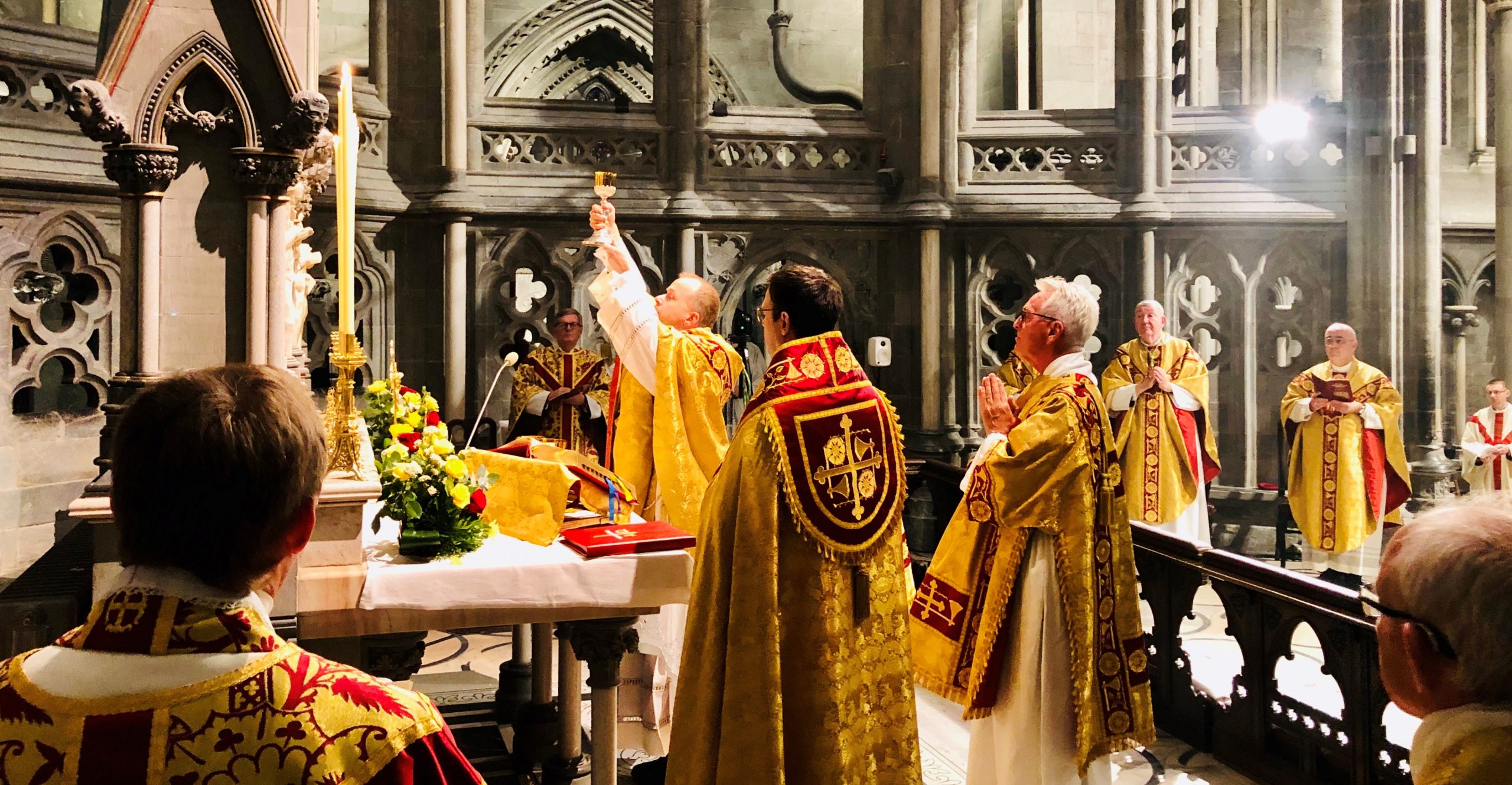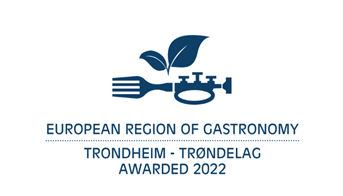In 2018, he launched his own Trappist beer in England and became a beer celebrity. Two years later, he became the new Catholic bishop for 11,000 Catholics in Central Norway.
Did you know that an order of monks makes the world’s best beer? The Trappist order is officially known as the Order of Cistercians of the Strict Observance. In an everyday life influenced by prayer, reflection, silence and hard work, the Trappist order is one of the few that also brews its own beer. The brewing goes hand in hand with ascetic life.
The new Catholic Bishop of Nidaros has been a Trappist monk in England since 2002. Erik Varden lived at the Mount Saint Bernard Abbey near Birmingham before moving to Trondheim to become bishop. After he became the abbot in 2013, a process that would last several years began. It led to the monastery brewing world-class beer. It’s called Trappist beer, often referred to as “the liquid bread”. Consequently, not only has Nidaros gained a new bishop, but the culinary region has gained a bishop who is passionate about craft beer and locally produced food.

Didn’t expect to be the Bishop of Nidaros
“I was sure I would be a monk for the rest of my life. Virtually everything at a monastery occurs on the property. We even have a cemetery on the property. I had a place there and I expected to live at the monastery until they carried me out there,” says Varden, adding that it came as a major surprise when Pope Francis appointed him as the Bishop Prelate of Trondheim in 2019.
“It was a big surprise and initially was not something I found easy to think about. It’s been a transition. It has taken time to get used to, but has also given a lot of joy,” says Varden.
Waited for 11 years
Before Erik Varden was ordained at Nidaros Cathedral on 3 October 2020, the Catholics in Central Norway had been waiting for a new bishop for more than a decade. No Catholic bishops have been ordained here since the Reformation in 1537. Although the celebration was scaled down somewhat due to the Corona pandemic, the event had major historic significance.
“My idea was to try to be as concentrated and open about it as possible. It was a great pleasure and gift for the service to be held at Nidaros Cathedral, which is an historic, magnificent and beautiful church building. There was also wonderful music from the cathedral choir and Scholl Sanctæ Sunnivæ,” says Varden, with a clear fondness for music. This takes us back to when Varden was about 15 years old and listened to a Mahler symphony.

Didn’t believe in God until his youth
“As a teenager, I was a very self-conscious agnostic,” laughs Varden, adding that it took a Mahler symphony to awaken him.
“I was listening to a Mahler Symphony when I was about 15 years old. It was like something inside me burst, and I became conscious that there was something in me that was bigger than myself. Initially, I didn’t experience it as security but rather as uneasiness; uneasiness that required me to move on. This signalled the start of a search that lasted for many years,” says Varden.
Are you still searching?
“Yes, and I hope to continue searching until the very end,” he says.
From dairy farming to beer brewing
When Erik Varden became abbot of the Mount Saint Bernard Abbey in England, he sold the dairy cows and started brewing beer with his monk brothers. In 2014, the brothers still had 120 dairy cows in stalls – equivalent to the largest dairy farms in Norway and almost five times the size of the average Norwegian farm.
“We had run a dairy farm there ever since the monastery was founded in 1835 and did so on a fairly large scale. But scraping together a profit was always a challenge and some years we made a loss. The year I assumed responsibility for the monastery, in 2013, we needed to buy some new equipment such as a tractor and milking machine. This raised the question about whether it was irresponsible to make such investments when the income was not high enough. We decided to stop the farming operations and start something else,” says Varden, noting that the idea of brewing arose when he was teaching in Rome.
“I had a student from a monastery in Northern Italy that brewed beer. I didn’t know you could brew beer other than industrially. My student said that the beer brewing was going well and generated a financial profit. Consequently, we put beer brewing on the drawing board of the Abbey’s council along with some other ideas and in the end decided to brew beer,” says Varden, adding that the decision took almost two years to make.
World-class Trappist beer
Trappist beer is not a separate category of beer, but means the beer is brewed in a monastery by Trappist monks. Only 14 of the world’s 171 Trappist monasteries brew beer, according to Wikipedia. The income goes to the operation of the monastery.
“Our monasteries in the Netherlands and Belgium have a long and distinguished brewing culture. When we told them that we wished to start, they were extremely encouraging. But they were clear that if we did it, we had to ensure that we brewed at the highest level. They also said that we should not brew an imitation Belgian beer but find our own taste. They recommended that we checked the English brewing traditions to find a pattern we liked and improvise around this,” says Varden, adding with a smile that they had the burdensome task of tasting beer until they found one that they liked.
“We ended up with a traditional British beer, Scotch ale, which is a strong, dark ale with a strength of 4-5 per cent. We started experimenting with it a bit. We made it a bit sweeter, gave it a bit more pizazz and then worked our way to something we were happy with,” he says.

Became a beer celebrity
On 25 June 2018, Varden and the Trappist monks at Mount Saint Bernard Abbey launched their first beer. The ale is called Tynt Meadow and is named after the meadow where the first monks settled almost 200 years ago. Katolsk.no writes that Mount Saint Bernard Abbey is the twelfth approved Trappist brewery in the world and the first in the United Kingdom. This, combined with the good reputation of Trappist beer, led to major media coverage of the launch, which took place at Tynt Meadow. When The Guardian, The Telegraph and the BBC covered the launch of the first English Trappist beer, the Norwegian abbot became a beer celebrity.
“It was a very exciting process. We had to learn a lot very quickly. We used three years from making the decision until opening the brewery so the brothers who brewed the ale could receive proper training. We worked closely with the monasteries in the Netherlands and Belgium. It was a pleasure to be able to launch it and get such positive feedback not only from English critics, but also from other independent sources on the continent,” says Varden, remarking that the beer has received favourable ratings in various channels.
“The challenge, as always, lies in maintaining the high and consistent quality,” says Varden.
Which food goes with “Tynt Meadow”?
“It goes well with meat. It has a freshness that means it is also well suited for game with strong sauces,” says Varden, who was a vegetarian when he was a monk in England but can now eat meat.
90 per cent cleaning and 10 per cent brewing
“The enjoyable part of that form of craft brewing is that the processes are allowed to take time. Nothing is sped up, there are no chemical additives, and the ingredients are incredibly simple. All you need is water, malt, hops, yeast and a bit of sugar. It’s essential that the ingredients are of first-class quality. We were incredibly strict with the cleaning,” says Varden, commenting that the Dutch brewmasters who trained them insisted that brewing beer is 90 per cent cleaning and 10 per cent brewing. “We had two fermentations, first in a tank and then in a bottle. I think the experience of the raw materials being placed in an optimal environment so they can perform at their best is terribly exciting,” says Varden.
How did you experiment with flavours?
“Our goal was to create a sort of synthesis between a British ale type and a recognisable Trappist beer. Trappist beer is not a type of beer, but an ethical term. Trappist beer is brewed within the monastery by monks or nuns.”
The income from the beer covers the monks’ living expenses and maintenance of the monastery buildings, while some goes to charity. However, Varden says that in principle a Trappist beer can be any beer, but people associate Trappist beer with strong beer.
“Trappist beer can be up to 12 per cent and often has a slightly Belgian character with sweetness. We tried to match the two with the Belgian and English qualities and experimented in a small home brewery before trying on a larger scale. We then brewed once a week and tested out different types of yeast, malt and hops,” says Varden.
Do you drink beer today?
“Yes, but I don’t brew. It would be a very pleasant daydream to have a microbrewery, but I don’t know how realistic that is. I’ve never been a brewmaster, but I was the person in charge. As well as being responsible, my job was bottling the beer manually. It was a fun process, and I enjoyed the teamwork. I sometimes miss that a bit,” says Varden.
Curious about Trøndelag craft beer
Bishop Erik Varden is looking forward to discovering more Trøndelag food.
“I had the pleasure of living for longer periods in areas in both France and Italy with very strong culinary cultures. I was based in England for almost 30 years and, during the time I lived there, English culinary culture has undergone enormous development. It’s much easier to eat well in England now than it was 30 years ago. But they don’t have the same degree of self-awareness that you find in every region in France and Italy, and they haven’t really had that in Norway either. I think it’s interesting, exciting and commendable that such development is thriving here too,” says Varden, who is quick to add that the beer he was involved in producing is a perfect match for the Munkeby cheese from Trøndelag. He is pleased to know that but is looking forward to getting to know the culinary region in which he is now bishop better.
Are you curious about Trøndelag craft beer?
“Yes! I have tasted very little so far but I’m looking forward to discovering Trøndelag’s food and beverage treasures.”
“If it’s possible to buy something that’s locally produced, I always do so,” says the bishop, who is looking forward to getting to know his diocese better.
“I meet people at formal meetings but also during conversations at Coop Extra, the recycling station and when I go to the dentist. I also plan to travel around,” says Varden, explaining that his work as bishop involves having the pastoral and administrative responsibility for members of the Catholic church in Central Norway and spreading the gospel.
“During my ordination as bishop, I promised to be gentle and charitable to the poor, strangers and those in need. That is a pretty big task. Being a bishop is a versatile job,” says Varden.
Trappist beer
Trappist beer is not a separate category of beer, but means the beer is brewed in a monastery by Trappist monks.
Only 12 of the world’s 171 Trappist monasteries brew beer.
In 1997, eight Trappist monasteries founded the International Trappist Association to approve and promote authentic Trappist beer from monastery breweries.
Requirements for Trappist beer
- The beer must be brewed within the walls of a Trappist monastery, either by the monks themselves or under their supervision.
- The brewery and the brewing process must be dependent on the monks and not the other way around.
- The brewery is not intended to be a profit-making venture. The income covers the living expenses of the monks and the maintenance of the buildings and grounds. Whatever remains is donated to charity.
- Trappist breweries are monitored to ensure the quality of the beer.
- The International Trappist Association is a legal entity, while the logo provides the consumer with information and guarantees about the product’s authenticity.
(Source: katolsk.no)
Written by Silje Kolaas, Oi! Trøndersk mat og drikke







